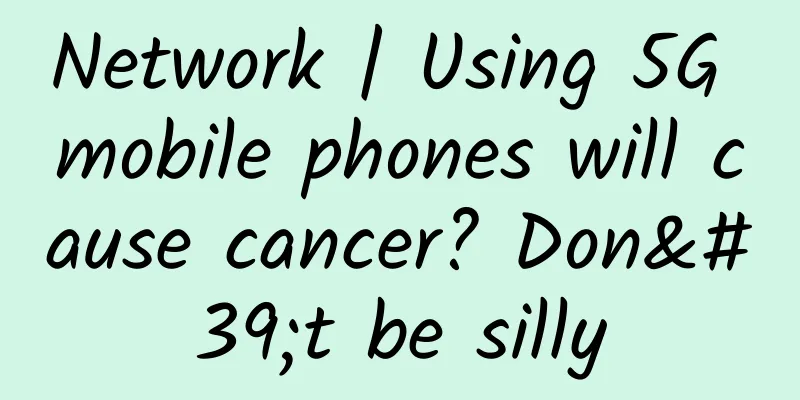The most outrageous way to die: GG after just a few looks?

|
Has everyone watched the popular TV series "Hunting Crime Picture Book" that was aired some time ago? Stills from "Hunting Crime" In episode 19 of "Hunting Crime Picture Book", the protagonists finally locked on the suspect and were only one step away from the truth, but the suspect died silently, with no wounds on his body and no signs of a fight at the scene. The medical examiner said he died of "photosensitive epileptic seizures" - a violent spasm of brain nerves caused by exposure to flashing lights, leading to death. So, can flickering lights really kill people? Image source: pixabay 01 Does this disease really exist? Yes, but there are almost no deaths. There are some quite complex concepts about epilepsy, so let’s use the heartbeat as an analogy. Sometimes, the heart beats violently and causes some obvious discomfort, such as palpitations; some people, for various reasons, are prone to tachycardia and get palpitations at the slightest provocation; and some factors that affect heart rate are external and specific, such as some people's heart rate accelerates when they get an injection. In contrast, abnormal brain waves emitted by the cerebral cortex can cause abnormalities in movement, sensation, etc. Such symptoms are called epileptic seizures; if it only occurs once, there is usually nothing to worry about. If it occurs repeatedly, it means that there is some internal cause, which is what doctors call epilepsy; some epileptic seizures are related to specific factors, and their cerebral cortex is prone to emit abnormal brain waves for specific reasons. This phenomenon is called reflex epileptic seizures. Photosensitive epilepsy is a type of reflex epilepsy. When patients encounter bright, high-contrast light at 15-25 Hz, their brain electrical activity becomes abnormally active, leading to various symptoms. When it comes to symptoms, many people may think of "epilepsy". In fact, there are many types of epileptic seizures. Epilepsy is a generalized seizure; in addition, there are partial seizures, such as involuntary twitching of facial muscles on one side; and absence seizures, where the patient suddenly loses consciousness, the brain goes blank, and has no reaction to the surrounding environment. However, no matter what type of seizure, it usually passes and gets better. Death directly caused by epilepsy does happen, but it is very rare. According to authoritative literature, there are about 6 million epilepsy patients in China, of which 120,000 to 300,000 are sensitive to light. It can be said that this is a common but often neglected disease. 02 How to prevent and treat photosensitive epilepsy? The most important thing is still prevention. As mentioned before, photosensitive epilepsy is related to specific light stimulation. Therefore, as long as similar factors are avoided, epileptic seizures can be reduced. Specifically, you can buy lamps that meet the "General Technical Requirements for Civilian Desk Lamps", use non-flickering monitors, and pay attention to epilepsy warnings before playing games or watching movies. Epilepsy triggering factors, picture source: self-made by the author, data source: "Survey on triggering factors of epilepsy" Secondly, it is necessary to understand the principles of first aid. In traditional concepts, when encountering an epilepsy, a hard object such as a spoon should be put into the patient's mouth to prevent him from biting his tongue. In fact, during a generalized epileptic seizure, the mandibular muscles contract strongly. The patient may bite the spoon, which may injure the teeth. The correct approach is to first check whether the patient is conscious, determine the type and severity of the epileptic seizure, and ask him a few questions to see if he responds to you. If you can't, and the patient is about to fall, people around should quickly support him and slowly put him on the ground; if there are fire or power sources around, put them out if possible, turn them off if possible, or move the patient to a safe place; if there is foam at the mouth, unbutton his collar and turn his head to one side to keep his airway open; if the patient is convulsing violently, do not press hard to avoid dislocation of the joints, but put something soft under his joints, such as a cushion or mattress, to avoid scratching his skin. During the whole process, pay attention to the patient's breathing and heartbeat, and call an ambulance immediately if there are any signs of trouble. References: [1]GLAUSERT, SHINNARS, GLOSSD, et al. Evidence-Based Guideline: Treatment of Convulsive Status Epilepticus in Children and Adults: Report of the Guideline Committee of the American Epilepsy Society[J]. Epilepsy Currents, 2016, 16(1): 48–61. [2]PADMANABAN V, INATI S, KSENDZOVSKY A, et al. Clinical advances in photosensitive epilepsy[J]. Brain Research, 2019, 1703: 18–25. [3]PADMANABAN V, INATI S, KSENDZOVSKY A, et al. Clinical advances in photosensitive epilepsy[J]. Brain Research, 2019, 1703: 18–25. [4] Clinical Diagnosis and Treatment Guidelines for Epilepsy (2015 Revised Edition) [M]. People's Medical Publishing House. [5] Li Min, Wang Jiangtao, Su Xing, et al. Research progress in photosensitive epilepsy[J]. Chinese Journal of Neurology, 2018, 51(02): 150–153. [6] Yang Zonghui, Zhang Xinguang. Performance and quality analysis of reading and writing desk lamp products[J]. Quality and Certification, 2021, (12): 66–68. [7] Yin Yanxiao. Investigation of triggering factors of epileptic seizures[D]. Nanjing Medical University, 2017. [8] Chen Shengdi, Deng Yulei, Liu Xiaoying (eds.). Epilepsy 3rd edition[M]. China Medical Science and Technology Press, 2021. Reviewer: Yin Tielun, deputy chief physician of the Department of Neurology, Peking University Third Hospital Airport Branch END Tadpole Musical Notation original article, please indicate the source when reprinting Editor/Pineapple Popsicle |
<<: Heading to high altitude! "Peak Mission" Everest scientific expedition is underway
>>: What changes will occur in the body within 72 hours after alcohol enters the body?
Recommend
When operating mobile game activities, there are 7 minefields that you must avoid!
An unreasonable operation plan and poorly impleme...
Wanmen University - Python programming basics for beginners fun practical course
Baidu Netdisk download location: r-67-Wanmen Univ...
Asian winter will make "ice and snow" more popular! Collect this guide and go hiking in the snow →
Opening remarks: The whole nation is going to the...
Learn how to optimize information flow ads in one article! Applicable to all industries
Many friends asked: I have been working as an opt...
BOE's LC smart light curtain empowers Zeekr 009 to create a milestone in intelligent dimming for passenger cars
On April 19, 2024, Zeekr 009 Guanghui was officia...
TLAttributedLabel Image and text mashup
Source code introduction: TLAttributedLabel image...
China Automobile Dealers Association: Analysis of China’s automobile exports in 2020
China's domestic auto market has been on a do...
Google's official MVP sample code reading notes
Unraveling the project structure According to int...
[Issue 16] Random Talk: Scientist from Zhejiang Province - Xu Shoubo: A pioneer throughout his life
...
Unveiling WeChat Enterprise Accounts: The Mobile Application Portal for Enterprise Customers
Enterprise accounts are mobile application portal...
Analysis of 7 bidding methods for Baidu search OCPC
Baidu search ocpc bidding is the current mainstre...
There are thousands of nice-smelling spices, but you must know these 5!
In modern life, whether it is food, medicine, dai...
Vipshop’s 618 marketing promotion skills, get new marketing techniques!
In recent years, as competition between tradition...
What does the "how" in Baidu bidding mean? How to modify the title of Baidu bidding method?
How to apply for Baidu Xijing? Can a general acco...
Flower Arrangement Bonsai Video Tutorial Baidu Cloud Download
Flower arrangement and bonsai video tutorial for ...





![[Operation Case] In-depth interpretation of community operation, this is my ten thousand word summary after experiencing four communities](/upload/images/67cc3efc607e0.webp)



